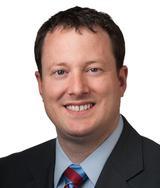
Preparing to apply for academic promotion can be simultaneously one of the most daunting and exciting times in an academic surgeon’s career. The peer-review process of your career to date provides a meaningful and widely recognized validation of the work that you have done to develop yourself as a clinical and academic contributor in the field of cardiothoracic surgery. However, the process of applying for promotion is often complex and time-consuming.
For most institutions, the application and review process will take more than a year. It will involve not only a careful review of your academic accomplishments but an assessment of the degree of impact you have had on the field.
Most institutions provide specific categories under which promotion is reviewed; you should familiarize yourself with these metrics well ahead of time. Understanding the specific metrics and manner by which you will be assessed is key to a successful application for promotion. Within each domain of your application, think of your achievements in three dimensions: scholarship, leadership and recognition, and professional service activities. Below are the general categories, but consult with your institution for specific requirements.
Scholarship
- Publications
- Presentations
- Curriculum/course development
- Research leadership roles (e.g., clinical trial accrual)
- Implementation of novel/innovative programs
Recognition and Leadership
- Divisional/departmental leadership
- Education roles (e.g., clerkship liaison for your service)
- Leadership of hospital committees/initiatives
- Professional society roles
- Editorial activities for journals
Professional Service
- Mentorship and/or teaching of students and junior faculty
- Extramural teaching activities
- Service on hospital committees
- Peer review functions (e.g., journals and study sections)
- Community outreach and volunteerism
Scholarship
Scholarship is the dimension of professional accomplishment that most people associate with applications for promotion. While certain components such as peer-reviewed publications and presentations at meetings are obvious, there are a number of commonly overlooked areas that many surgeons can easily highlight. The development or introduction of new clinical procedures or use of technology should be a component of your scholarly activity. Increasingly, promotion and tenure committees understand the importance of activities outside the traditional academic sphere such as social media and community engagement as being important and valuable contributions by academic surgeons.
You should also look for novel ways to highlight the impact of your work. While traditional metrics of academic contribution such as the h-index number or number of first author publications remain valuable, highlighting coverage of your work in popular media or dissemination on social media platforms can also be an impactful statement. In addition, remember to highlight your contribution to the academic development of others such as mentoring trainees in research by showcasing their eventual career success after your mentorship.
Recognition and Leadership
While not everyone will have the opportunity to serve in a traditional leadership position such as the division chief, academic medicine offers numerous opportunities for surgeons to adopt leadership roles. Intentionally approach and align the positions you take with your clinical and academic interests whenever possible. Think about including recognition from patients and students in your application. If you have received positive comments, include short quotations in the narrative that accompanies your CV so they can provide valuable context to the evaluators. Keep track of recognition and awards as you receive them. It is often quite easy to overlook these after the fact.
Professional Service
Surgeons can contribute to hospitals and professional communities in several ways and are frequently looked to as leaders in our local communities. Service, even in a time-limited manner on hospital and department committees is viewed very favorably. Furthermore, in most institutions, promotion is a function of the medical school rather than the hospital, thus it is important to seek opportunities to contribute to the medical school’s mission directly. Find opportunities to lead problem-based learning sessions, teach an anatomy session, or precept students on clerkship rotations. Also, remember to include roles you serve in your local community related to medicine (e.g., serving on the COVID advisory board at your child’s school). Highlight how you have leveraged your platform to contribute.
Final Recommendations
The most effective candidates develop applications that tell a logical story about their careers, with the various functions of their professional and academic lives intertwined (e.g., a lung transplant surgeon who performs transplant research, leads the transplant program, and oversees the transplant fellowship). Developing this synergy is not only the most effective way to accomplish your goals, but it also is compelling evidence that you are on a logical path towards becoming a leader in your chosen field.
It also is important to keep an ongoing record of your accomplishments, as we all tend to forget many of the small but essential roles we play every day. These things can make a huge difference in rounding out your application.
Develop a system to update your CV regularly and keep it in the format for promotion that is required by your institution. This will help you can keep an eye on filling the categories you need for promotion. I personally have a folder in my inbox for accepted manuscripts, another for accepted presentations, and a third for lecture invites. That way I know I have a central place to look back to when I’m updating my CV.
Perhaps the most important part of preparing for promotion is to start the process a couple years in advance of the actual application. Understand what will be required, and position yourself accordingly.
Additional parts of the series:
- Part 2 - Putting Together an Educator's Portfolio for Promotion
- Part 3 - Putting Together a Clinical Portfolio for Promotion
- Part 4 - Putting Together a Social Media Portfolio for Promotion
The opinions expressed in this article are those of the author and do not necessarily reflect the views of The Society of Thoracic Surgeons.
